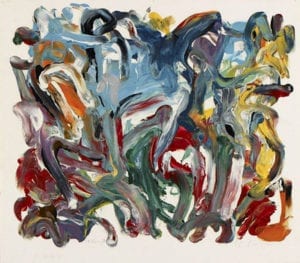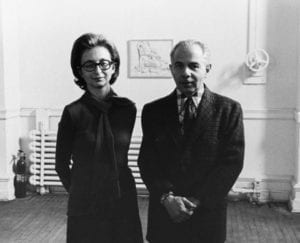How To Buy Art? Follow Your Heart

Charles Clough, Untitled, 2008, Enamel on paper painting. Courtesy of Birmingham Museum of Art. (Formerly part of the Vogel Collection.)
This article was published in the September 2015 issue of Nashville Arts Magazine
by Rachael McCampbell
Buying art can be intimidating. Having worked in art galleries in both New York and Los Angeles, I remember clearly the tentative, almost fearful, faces of clients who had never purchased fine art. Seasoned art buyers were bold and asked tough questions. They wanted to know about the artist’s personal life, and they asked for studio visits and discounts. Some didn’t know anything about the artists or what the art was about—they simply bought art to impress their friends and colleagues. But I particularly enjoyed working with brand new clients because they seemed to buy art for what I thought was the best reason—because they loved it and couldn’t imagine their lives without it.
But how do you determine the value of art? There is no Kelley Blue Book to give you a clear idea of the value of an 18 x 24-inch oil landscape on Belgian linen. And let’s face it—the art world can be overwhelming. There are so many different types of art, artists, and price points. I remember walking into a gallery in Los Angeles where the paintings, priced at $150,000, were by an artist who had only just graduated from art school. And in the next gallery, a mid-career artist, who had been teaching and exhibiting for over twenty-five years, was fetching $10,000 for the same-sized work. How could that be? Was it the imagery? The style? Some of that has to do with the gallery itself. If an art dealer is highly respected and carries a stable of desirable, museum-quality artists, then the dealer and artist can put any price on the work that they deem fit. Whether it’s truly worth the cost is anyone’s guess. And a dealer or artist who tells you to buy art as an investment should be strongly questioned. There are never any guarantees. If the art you purchase goes up in value over time, consider it a bonus. I think art is like anything in this world—the value of a painting is what someone will pay for it.
So, how does the average person who wants to start buying art navigate the maze of choices from art fairs, artists’ studios, galleries, online stores, eBay, auctions, and more? Educate yourself. There are experienced art consultants and designers who are knowledgeable about purchasing art, especially in the community where they work. They can point out who they think are strong, legitimate artists on a healthy career path and dealers they enjoy working with, but you may not like their taste in art. It’s subjective. Attend monthly art openings, read art magazines, and research artists online.
I suggest you keep a folder of any images you respond to—maybe it’s the color, the subject matter, the conceptual statement, the mood, the medium or texture.
Whatever it is that attracts you, tear it out of a magazine or keep a digital file. Discover what YOU love. Then, if you respond to a particular artist’s work, ask to visit their studio or find out where their next show is so you can meet them. Maybe you can buy a sketch or small piece to begin with and build from there. Artists are usually happy to talk to new collectors and want to find a way to help them buy their work. Some artists sell from their studios but charge close to their gallery’s retail price so there’s no conflict with the dealer. If you love a piece but cannot pay for it all at once, ask for a payment plan. Some galleries and artists are open to that. I am still haunted to this day by a painting I fell in love with twenty years ago but was too afraid to ask for a creative purchasing plan. If a piece of art truly moves you, act on that.

Dorothy & Herbert Vogel,1975. Photograph by Nathaniel Tileston
And remember, you don’t have to be wealthy to collect art. Two of the most celebrated collectors in the world were Herb and Dorothy Vogel from New York City. He was a postal clerk, and she was a librarian. They used her salary to live on and his to buy art. They filled their rent-controlled, one-bedroom apartment with thousands of small works of art by what are now renowned minimalists, amassing the most important post-1960s art collection in the United States—over 4,782 works.
When Dorothy was interviewed after the release of Megumi Sasaki’s second documentary film about the Vogels (see Herb and Dorothy), she summed up the essence of collecting with this:
“I think people need to follow the heart. Don’t listen to a lot of people; if you do, you won’t be happy. Listen to yourself.”
For more about the legacy of the Vogels’ collection, please visit www.vogel5050.org.

As an art lover who has, for nearly 40 years, made a living in music and theatre, and now arts education, I know firsthand the challenges of collecting art on a budget. That said, my home is filled with pieces that give me great joy.
I started giving my daughters art as Christmas gifts when they were in elementary school, and now, in early adulthood, they are both beginning to add a piece every year or two to their budding collections. Knowing that they are supporting artists whose work they admire, is as gratifying to them as knowing that someday their collections will pass down to their own children. And the in-the-moment enjoyment of that art? Well, that, of course, is priceless.